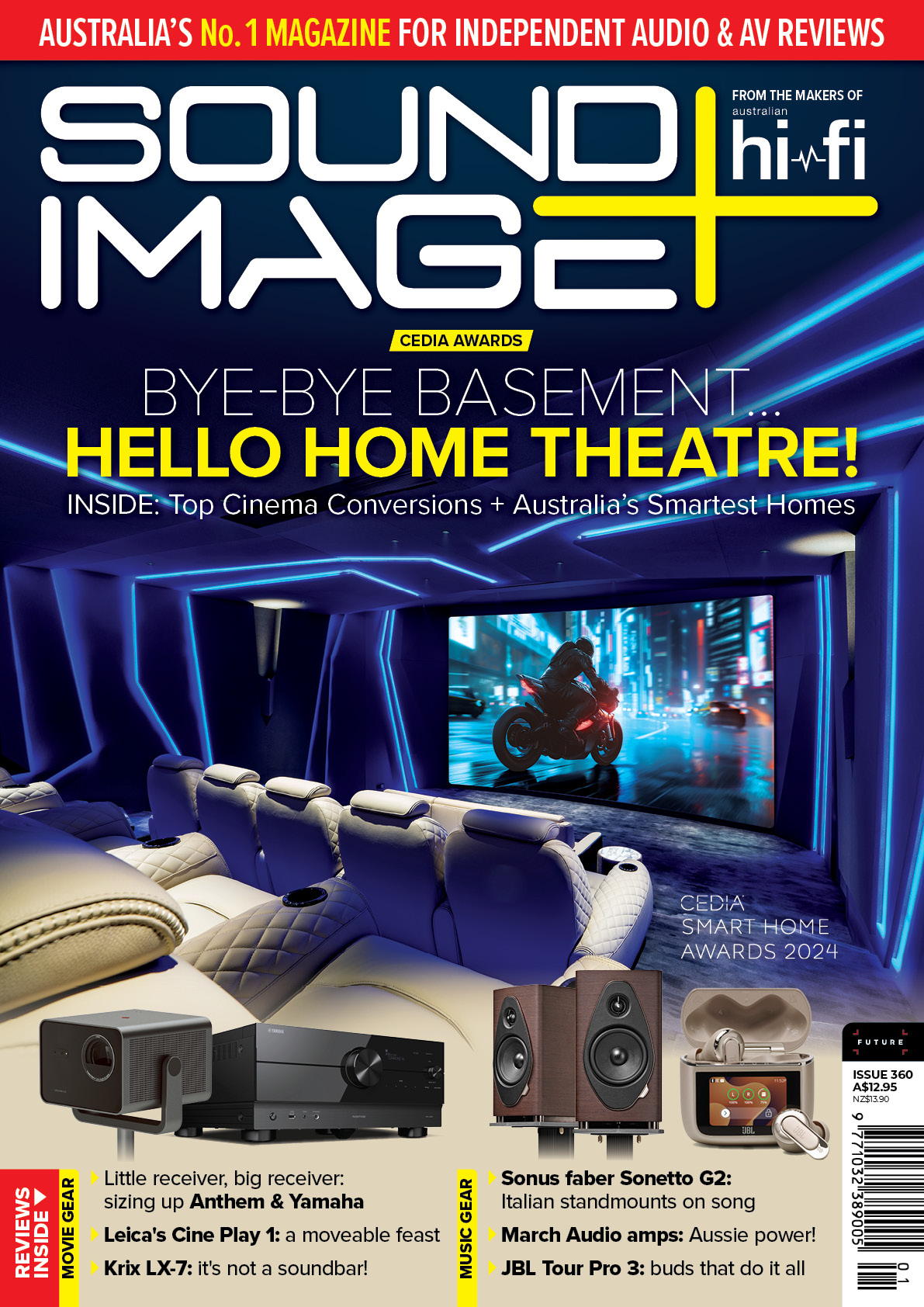Step inside the world's best home cinema – a 'church cloister' entrance, gold ceiling and 15,000W sound system
'Surprise us!' was the minimalist brief from the owners. And Wavetrain Cinemas did just that...
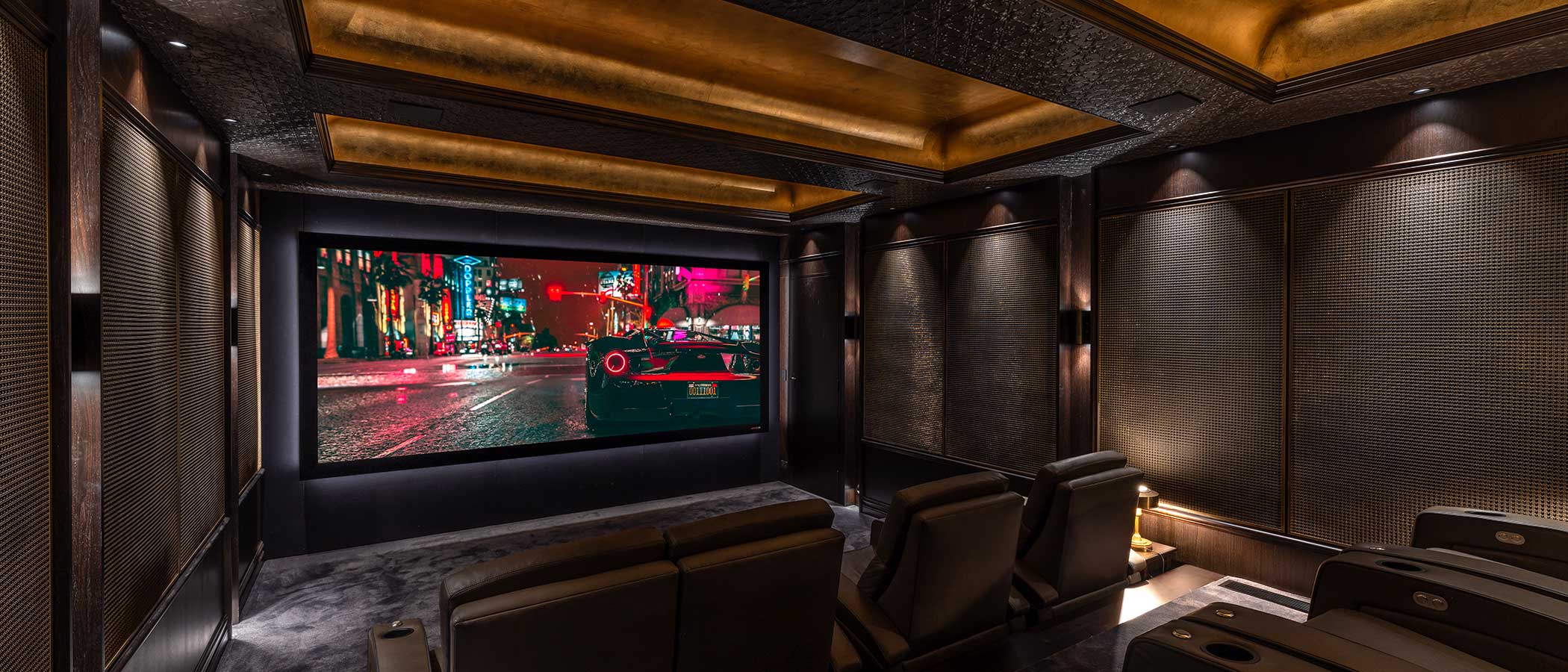
Some movie fans will know exactly what they would want in their dream home cinema. Perhaps they want it to look like a classic movie house, or to take elements from a particular movie – we’ve seen Star Wars home cinemas in the past, and one using design ideas from The Matrix. Or they might want specific equipment, or ask for a drinks bar at the back, or to prioritise screen size over all other considerations. There’s invariably a wishlist of some kind.
But when Australian home cinema design company Wavetrain Cinemas began discussions over the design for this particular home cinema, which was judged to be the world's best in CEDIA's 2023 global awards, there was no initial concept.
“The client’s brief was simply that he wanted an amazing home cinema,” says Wavetrain Cinemas’ David Moseley, “or to use his own words: ‘surprise us’.”
Far from feeling bewildered, however, Wavetrain’s team was ready to jump on this very general initial guidance.
“This has become a common occurrence for us,” says David Moseley. “Clients are often happy to trust us to design the cinema room. We always take the project from initial design concepts to building the cinema, and through to the final installation and calibration. We rarely repeat a design, and even if a client asks for a specific design, we will customise it to the client and the architecture of the main house.”
But with no specific brief, where to start?
“Well, when there’s a completely open design, we’ll try to find clues as to what makes the client tick. This is hard to explain, really – how we manage to come up with a creative idea. But in this instance the main house was one of the oldest houses in Australia, and since it had already been renovated, we asked the clients to show us around what had been done. During that walk around, we came across some windows repeated in the house with pointed arches that felt gothic in style – they reminded me of a visit to England and the detail in a church cloister.
Get the What Hi-Fi? Newsletter
The latest hi-fi, home cinema and tech news, reviews, buying advice and deals, direct to your inbox.
“So the initial concept was to create a ‘church cloister’ entrance [below] leading down to the basement room, setting the tone for the cinema, which was going to be a luxurious design with an emphasis on the material use and differences in texture and sheen.
"We presented the original design concept to the client, and it was not only accepted, they were blown away by the ideas. And apart from some of the lighting – specifically the pendants – the design never altered from our original concept.”
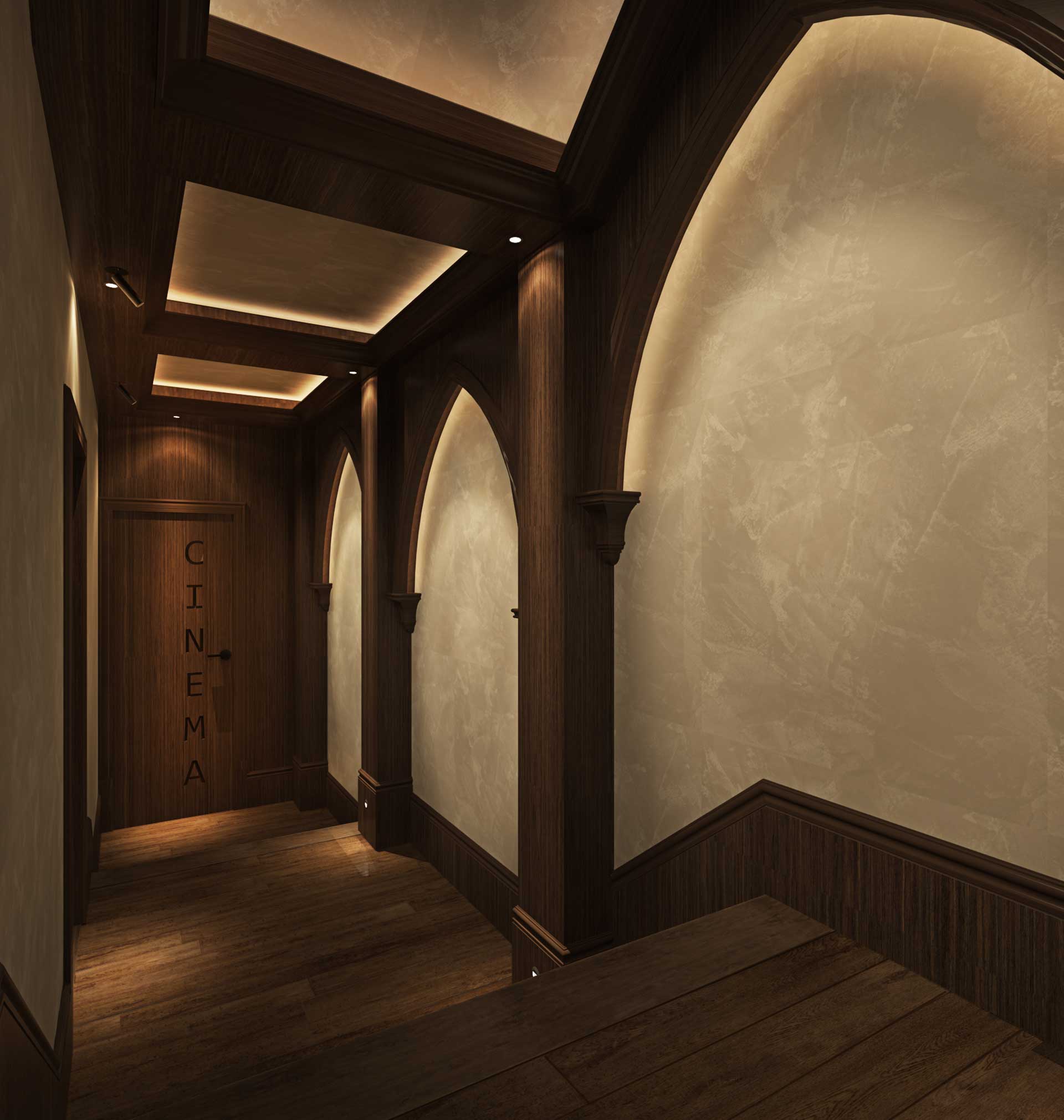
Concert-level dynamics

This feature originally appeared in Sound+Image magazine, one of What Hi-Fi?’s Australian sister publications. Click here for more information on Sound+Image, including digital editions and details on how you can subscribe.
There was one client request beyond being surprised, however, which was that the room’s audio system should be able to play concerts at realistic levels. Wavetrain accordingly increased the SPL specifications to 100dB continuous, with peaks of 110dB at the front row, and some to spare.
“The bed channels of the system are able to do this with four to five dB of headroom,” says Moseley.
But there’s more to dynamics than the upper level; the noise floor also defines the range. Wavetrain aimed for NC20, a noise criterion level equivalent to sound levels of some 30dBA for air-conditioning and operational noise – a level far below recommended domestic standards. Though as we’ll see later, it was AC and projector ventilation that became the project’s biggest challenges.
To achieve the required dynamics and audio dynamics, Wavetrain turned to Elementi Audio’s high-output active speaker system designs, which were developed by Moseley himself.
“We offered the client both the Elementi ‘Fire’ compression driver systems and the Elementi ‘Air’ ribbon-based designs, and he preferred the musicality of the Air ribbons and the 360-degree immersion that their ultra-wide dispersion characteristic provides. We decided on a configuration that would provide a maximum sweet spot, and high-quality components for the audio system that would be used most often.”
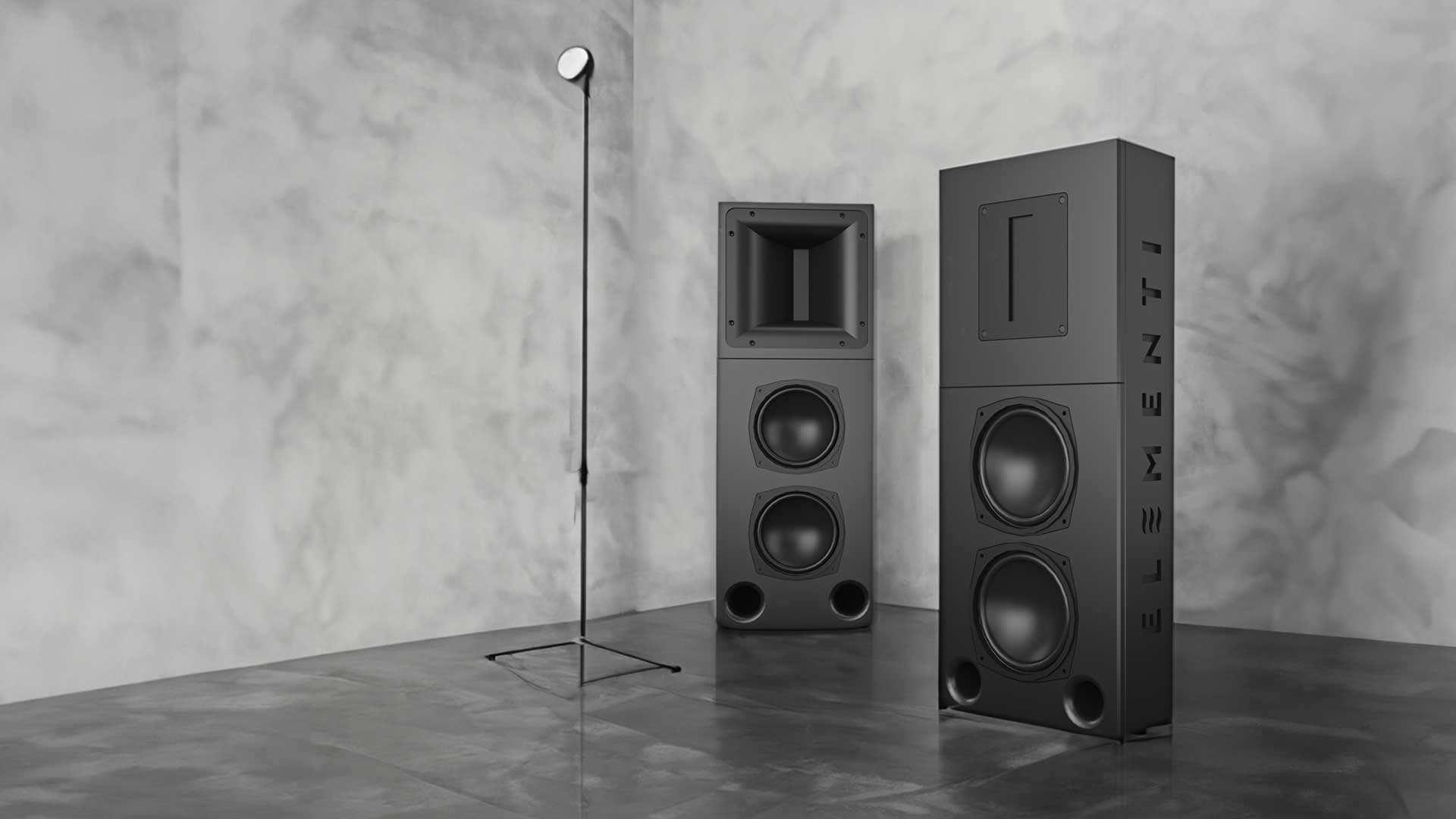
That system comprises LCR Elementi Sirocco speakers behind the
acoustically transparent screen, six Elementi Zephyrs in surround positions, and four Elementi Onyx 15-inch subwoofers. Then on Atmos duties there are six Pro Audio Technology in-ceiling speakers.
These are powered by a Pro Audio eight-channel amplifier, whereas the Elementi speakers follow the brand’s unique audio design in having their own associated amplifiers located very close to the speakers, in vertical enclosures. This has the benefit of very short speaker cable runs with minimal electrical interference or losses.
It also allows the choice of various modular amplifier configurations to match the role of each speaker. Here the Sirocco LCRs and Zephyrs are each bi-amped by Elementi Tungsten 2-channel amplifiers offering 1000W of power, and being fully digital they benefit from floating 32-point DSP processing, digital crossovers, FIR filters with correction in the frequency and time domains, and high-quality DACs. The power modules themselves are high-flow designs from Denmark’s Pascal, which Wavetrain rates as “incredibly reliable” as well as offering superior sonic performance.
There is, all told, almost 15,000W of amplifier power in this home cinema.
In terms of layout there are no front-wide channels used here, as the wide dispersion of the LCRs (120-degree horizontal dispersion) and side surrounds (160 degrees) means these are not required to fill the usual front-wide ‘hole’ – and these are underutilised channels in most soundtracks anyway, notes Wavetrain.
The four subwoofers are placed on the quarter points in the width of the front and rear walls, and unusually at the half point of the height as well, all to cancel the various potential standing waves.
“We also implemented bass traps in all the ceiling bulkheads, front corners and the seating platform,” notes Moseley. “We were limited with what we could do by the architectural design, but the results were good. Storm Audio provides very flexible bass management, and here we run all subs as a group for LFE, but then the front and rear subs as two separate groups for front-to-rear bass steering, supported by steering from the relative speakers. This proved better than isolating all the subs individually, as that provided too much variation across the seats – it was tested and discarded.”

So the full channel count here is 9.4.6, but with combined sides and two-way bass management, they are effectively used as 7.2.6.
And as is something of a rule in Wavetrain Cinemas, there is no central master seat.
“Putting a seat in the middle of the row means sitting in all the nulls/peaks for the width,” explains David Moseley. “Even if you fix that with sub positions, it’s still occurring for all other speakers and that seat can’t be tuned in conjunction with the other seats. By carefully placing seats in the width, you can attain a much more even bass response that requires less adjustment.
“The same applies for the length of the room, but in this instance we have taken the reference point as being the centre of both rows. We have no issue setting up a preset for one seat if required, or if they instruct us to make one row the primary, we would do so, or we would bias the sound. These things should always be a client's choice, but preferencing one row makes too big a compromise for the other row. The client brief here was to have all seats sound good.”
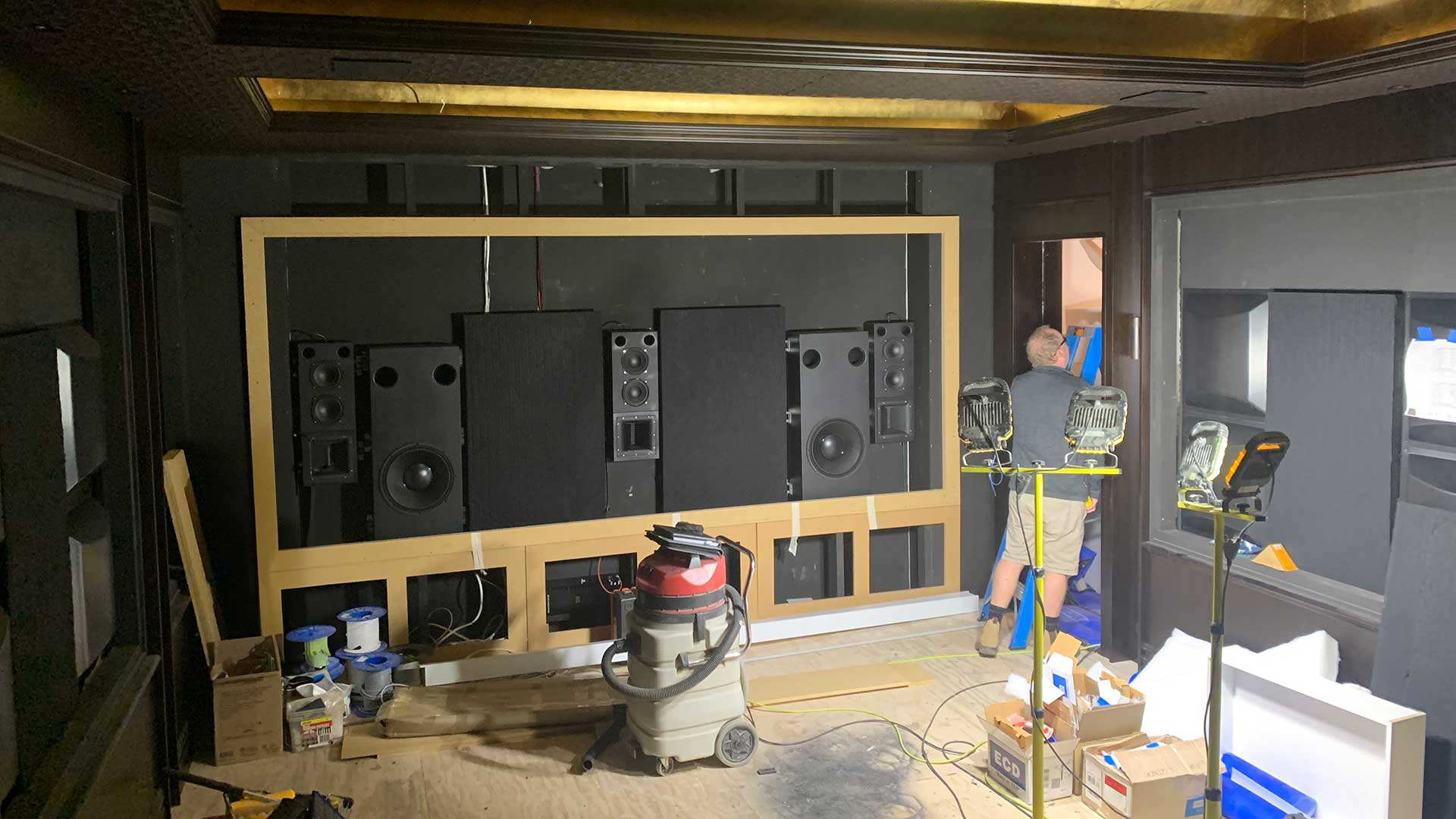
End-to-end digital
While we’ve covered Elementi-equipped home cinemas before, this is the first we’ve seen to take advantage of the Elementi system’s ability to use Dante’s audio-over-IP [AoIP] standard. This means the signal is kept digital all the way to the Elementi amplifiers using standard data cabling rather than pricey balanced connections or speaker cables, massively simplifying the cabling on the project. And this rethinking of home cinema topology also delivers sonic benefits.
“The entire audio system was set up for AoIP via Dante,” says Moseley. “The amplifiers are digital, with their own DSP, so previously, when using analogue connections, you would have to do a D/A conversion on the pre-out, plus a A/D conversion internally in the amp. Jitter is audible from those conversions, affecting both time and, in the D/A conversion, also level, the more audible of the two, especially in higher frequencies.
“Using Dante removes the unnecessary conversions and allowed us a tighter focus in the design on low jitter. The Lumagen has the lowest jitter output of any HDMI output, at 10 picoseconds. The Storm Audio processor with shielding between the input/output processing also has an exceptionally low jitter. Passing the signal via Dante over a dedicated switch means we have a perfect digital signal being delivered from the processor to the amp, and not converted to analogue until the very last moment in the amplification. With a lack of frequency level changes and no smearing of the time domain the audio is simply easier to listen to, and details easier to discern.”
This clarity is further protected by full acoustic treatment and also sound isolation, including fully isolating the whole structure from the sandstone foundation, and having all speakers and subwoofers further disconnected on resilient mounts.
Sources for the system include a Panasonic UHD Blu-ray player for discs and an Apple TV media player for streaming.
Furman power conditioners supply the rack-mounted items and the projector, although the power amps are on general room power, as the home’s power supplies provide filtration and the whole house has its own voltage regulation at the main input.
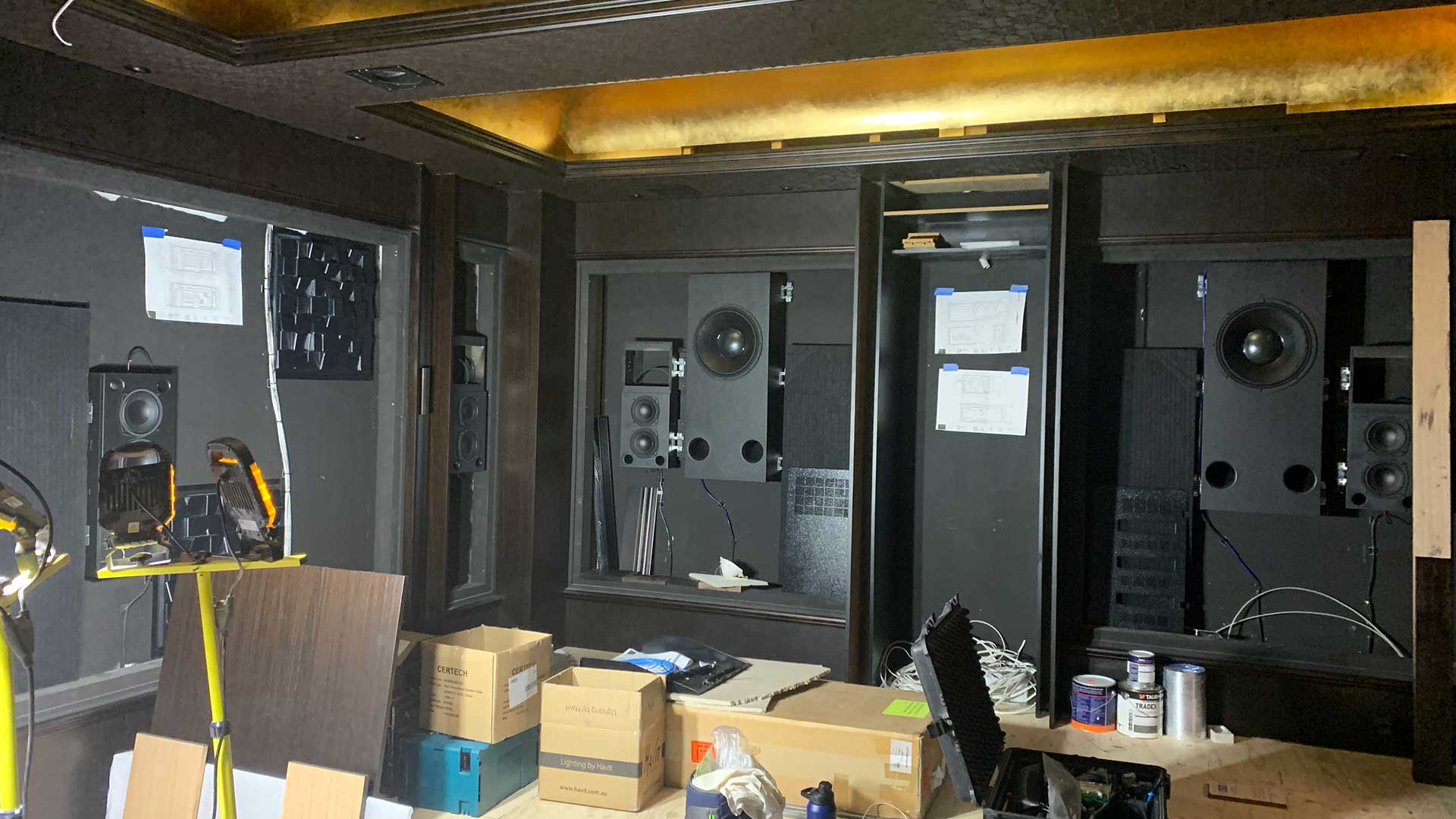
Lasers & mirrors
So to the vision system, which is headed by the Christie M 4K25-RGB projector with its solid-state pure RGB laser optical system, illuminating a 165-inch Severtson Cinemascope screen, yielding an image 3.8 metres (152 inches) wide.
“The video system goal was to produce 100 to 200 nits and provide a Rec. 2020 system,” says David Moseley. “The final measured figure was 130 nits, but with perceived brightness it appears closer to 200-300 nits, which is how
we set up for tone mapping on the Lumagen.”
The Lumagen video processor was used not only to calibrate the system for tone mapping and colour accuracy, but also to handle all video switching, including presets for three different screen ratios: 2.4:1, 16:9 and 1.9:1, this last for IMAX content with slight cropping. A Screen Research masking screen increases perceived contrast.
“We also used a low-gain screen [0.7 gain]”, says Moseley. “It doesn’t change the contrast, but it does lower the black level. This projector is capable of 7000:1 on/off contrast and 1100:1 ANSI, but lowering the black level means we have better all-round blacks for dark scenes. Considering the brightness of the projector, we considered this a good compromise to make.”
But where is the projector? It doesn’t fire straight down the room, as is common.
“We could not recess the projector into the wall, so we needed to vertically mount it, to hide the bulk of what is a large projector with a high light output,” explains Moseley. “Then we use mirrors. The projector is in an engineered hush box with a double 6mm optically-coated port glass assembly – all of which we manufacture in-house, along with the mirror assembly. This uses a scientific-quality optical first surface mirror. The total reflectivity for the system is less than 5 per cent: both pieces of glass are angled to reduce reflections, and the internals are lined with compressed insulation board to absorb both noise and light reflections. It’s these small details that are often forgotten, yet which massively improve the end result.”
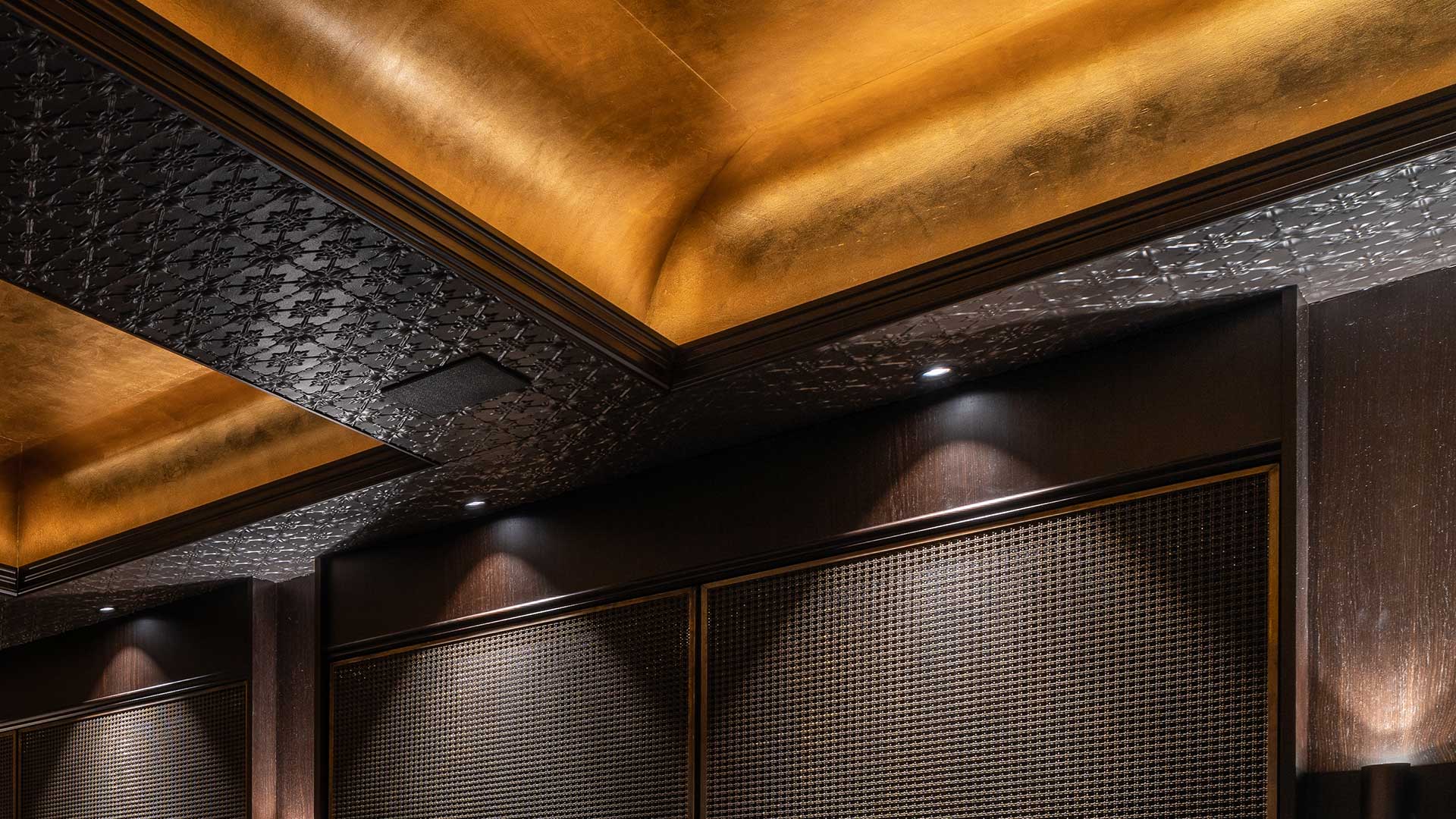
Talking of reflections, what about that gold ceiling? Isn’t that reflective?
“I did have to convince my staff on that,” admits Moseley. “They were adamant that the gold ceiling was going to be an issue, and why would I do this in a high-end cinema! But it works for a few reasons. The ceiling is very high, with deep coffers, so reflections off the screen are either at a very high angle for the front row, or cut by the coffer on the rear row. We also aged the brass to cut back the reflective quality – it’s now very dark, which took some six coats of ageing solution, and it will continue to darken over time. The gold is very muted, and the lower section of the ceiling is a very dark colour, almost black. So when the lights are off, the whole cinema is very dark in its overall palette, and reflections back off the screen are almost non-existent.”
As for audio reflections, the unusual ceiling treatment was enabled by the dispersion characteristics of the Elementi speakers.
“The front and rear bed channels have a 20-degree vertical dispersion from the tweeter, and the ceiling also being very high and vaulted cuts down angles of reflection, we didn’t need to worry too much about the first reflection off the ceiling. This allowed us to take the ceiling in the new design direction.”
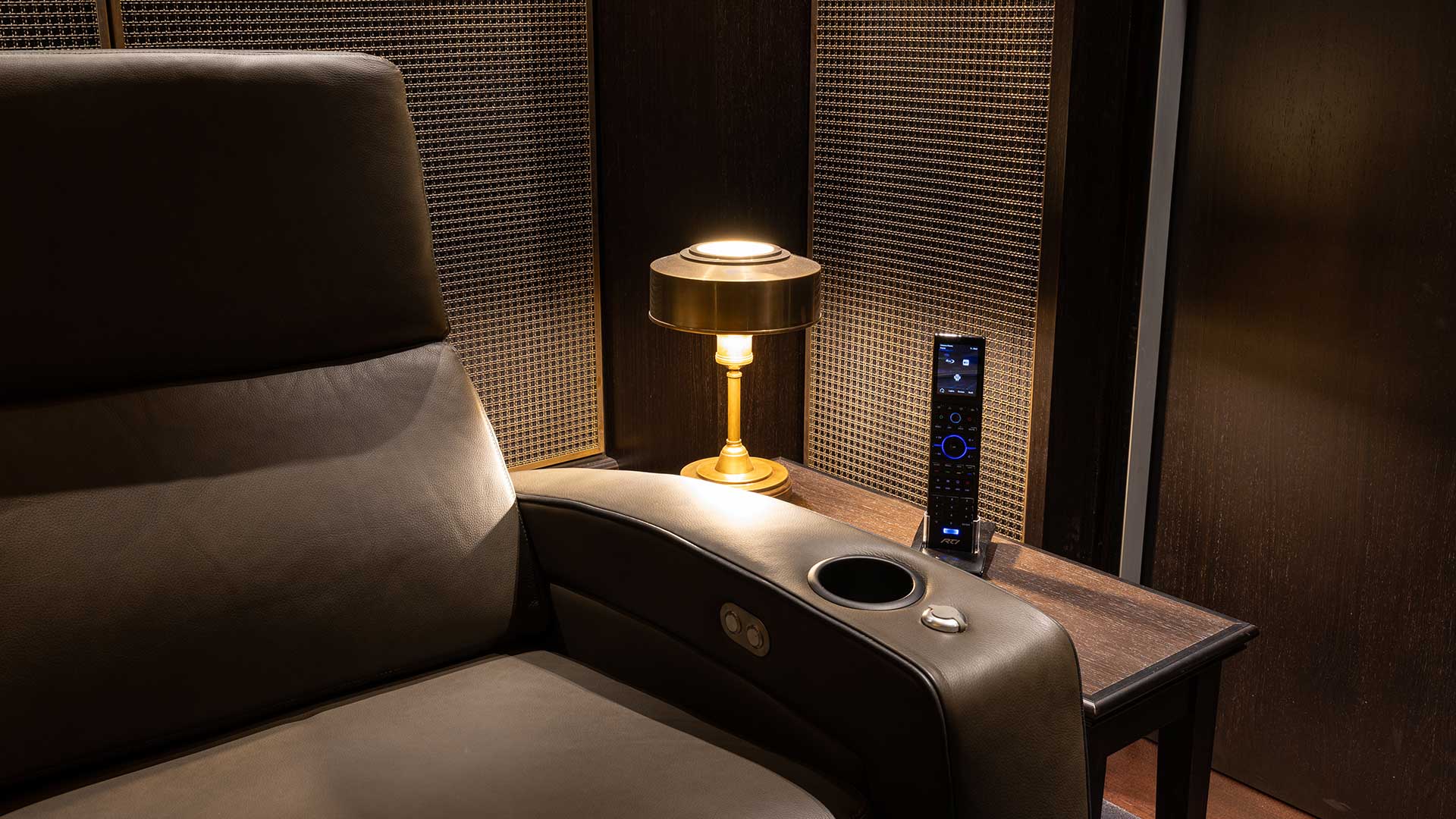
Clearing the air
But there were unexpected issues with the ceiling, along with that cloister hallway, also with getting a supply of air into the room and out again, notably to ventilate the projector, which produces heat even at half power. And these obstacles came not from the original design, but as the result of project delays.
“We normally handle all elements of the room, and that includes not only the interior design, the seating, the carpets, but also all the electrical and AC,” notes David Moseley. “We do not let other trades inside our cinemas, and the mechanical engineering is part of design.
“So here we would have built the cloister hallway as part of our contract for the cinema, project-managing that carefully with the site builder. Unfortunately, here the client had timing issues and the cinema component got delayed until well after the project was completed. Meanwhile, the builder and various contractors had just done what they wanted, running a huge amount of pipes and conduits through the ceiling, making it impossible to achieve the original design.”
When Wavetrain returned to the task, it was decided to leave the hallway as it was. But within the main cinema the team had to divert cable runs and pipes so that the bulkheads wouldn’t interfere with the coffered ceiling.
“This did cause us significant issues with the AC design and projector ventilation,” says Moseley. “There was no allowance to get fresh air into the cinema, with the room being completely underground, plus we had the control room at the room’s rear left with no ventilation available to it. So we put four air feeds into the control room, with a sectioned-off area to allow us to penetrate the wall with ducts in the vertical riser going both down for supply, pulling air from a shaded area of the house, and up for return air. We also installed a pressure release valve – a cinema is a pressurised room and you can’t force in fresh air, so you need to release the pressure.”
With the builder also loading the rear wall with pipework and electrical cabling, the Wavetrain team needed to lag the pipes, frame around them with a cavity, and then install a sound isolation system, before painstakingly adapting the curved ceiling to create a plenum for that return air supply and for the stream of heated air from the projector. The projector now receives a fresh air intake coming from the floor via an inline fan under the seats and an intake grille on the edge of the seating platform, “so we could attenuate any noise,” says Moseley. “The total grille area is 50 per cent bigger than the supply air duct, and this ensures no turbulence noise is generated – most noise from an AC system once you place the fan coil further away is actually turbulence, not plant noise. Here we are moving a lot of air through the projector box, so the item heard first is the projector and ventilation. But turn those off for just music listening, and the room is insanely quiet; the AC is inaudible. We hit our NC20 target on the rear row closest to the projector ventilation, and NC19 in the front row.”
Also interesting is how Wavetrain deliberately keeps all the AC grilles at floor level. Why?
“Because air moving even gently through the light path will produce a shimmer on the screen,” Moseley explains.
The final result is a room that is exceptionally well-controlled acoustically, but which still has plenty of life, adding to the “envelopment of the system” as David Moseley calls it, a characteristic of the Elementi ‘Air’ system’s wide dispersion.
“It not throwing the sound at you like a compression driver system, so it’s much easier to listen to,” says Moseley, “and the ribbon tweeters are very light, so frequencies are extremely accurate in the time domain and accurately present transients in the sound. Vocals are crystal clear. With an exceptionally low noise floor, the dynamics of the system are also a standout. We always design our systems to have a minimum of 3dB of headroom. This means power without strain.”
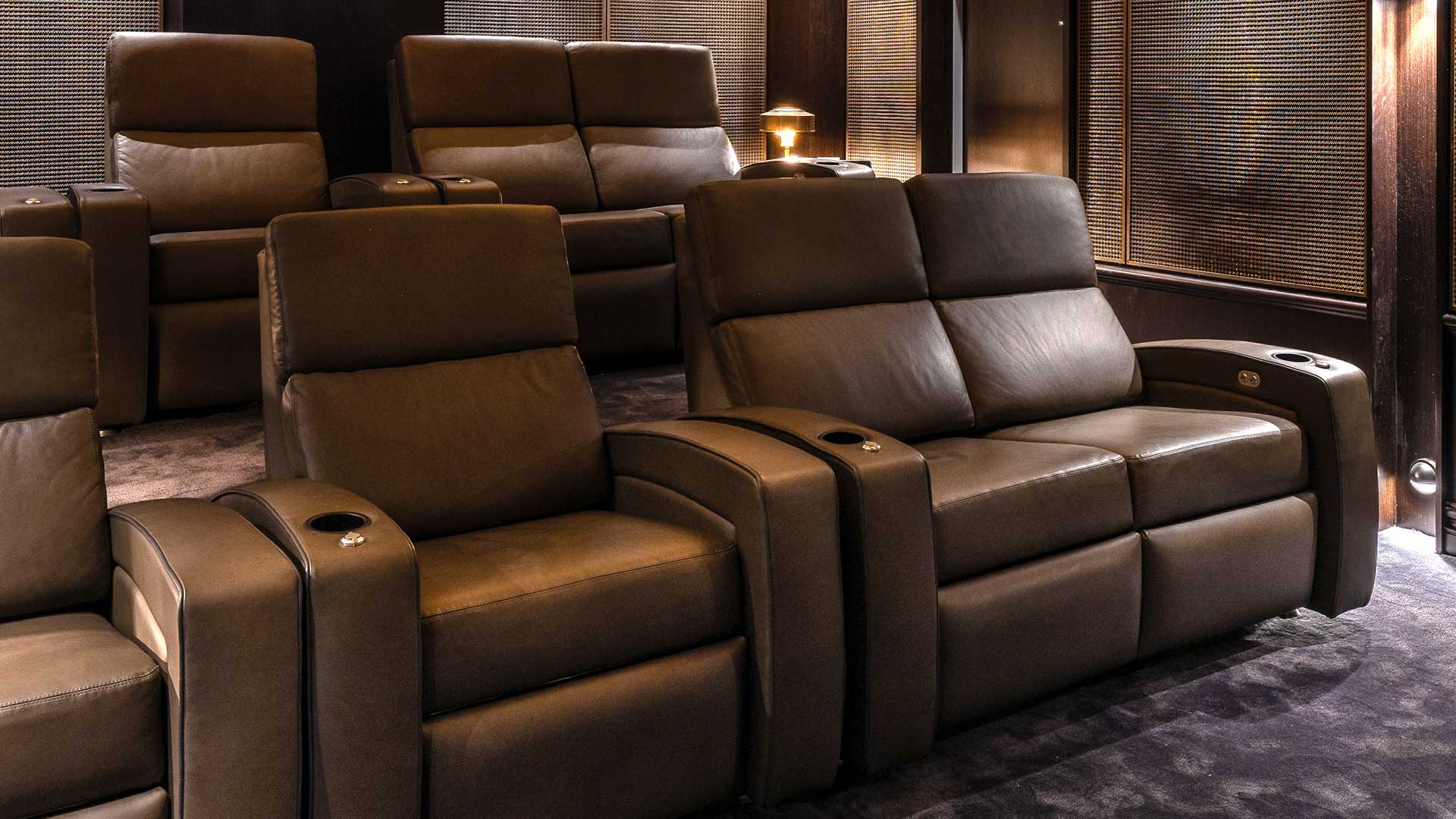
Shake it all about
Indeed the impact goes beyond the audible and visual: it’s visceral as well, thanks to the inclusion of D-Box, a motion system which equips seats or platforms with movement synchronised to on-screen action using coding developed movie-by-movie. It’s not actually a “shake it all about” system; it uses precise control that genuinely adds a tactile dimension to movies (and games, especially simulations). At its best it heightens engagement and realism.
“The client here loved D-Box,” says Moseley, “so all seating was designed to be compatible. And while it was initially installed into only the rear row, he quickly upgraded the entire cinema. We consider it a critical element and some 80 per cent of our clients elect to install D-Box.”
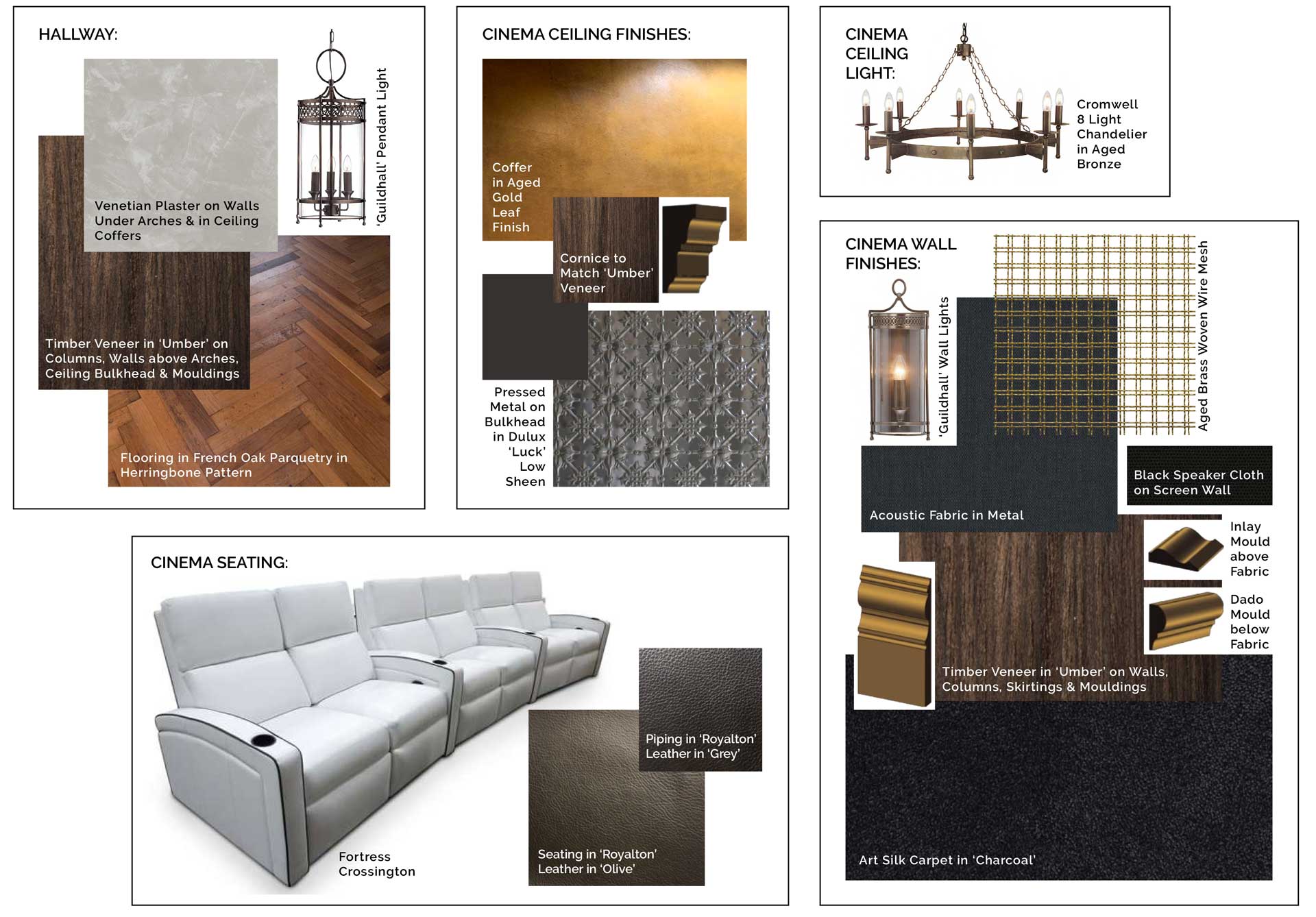
Pushing the boundaries
Indeed the client is clearly thrilled with the whole end result.
“We were immediately impressed with their knowledge and passion for not only audio engineering but also design,” he tells us. “After the initial design meetings, we gave Wavetrain Cinemas complete creative control and asked that they surprise us – and we were extremely impressed with the results. The cinema is above and beyond what we could have imagined, and the audio/video quality has exceeded all expectations, making it our favourite room in the house. It’s been a great experience, and Wavetrain Cinemas has our highest recommendation.”
Indeed we gather that Wavetrain will return soon to implement Dirac Live ART (Active Room Treatment) – “a revelation, never experienced anything like it before”, says Moseley. “And Dirac ART uses the subwoofers individually, so we’ll break them apart again.”
When we ask David Moseley what he thinks makes Wavetrain Cinemas different, he highlights how that passion for interior design adds something special on top of the technical design process.
“Anyone can design a black box in which to watch movies,” he tells us. “But our clients dream of an escape – and that is not just about escaping into the movie itself, but the whole theatrical experience of entering a great piece of architectural design. Very few of our peers go to the extent that we do, but we feel that having total control is the only way to deliver these one-off boutique designs while still honouring what we do as a profession. We will always push the boundaries aesthetically – and that’s why our clients seek us out.”
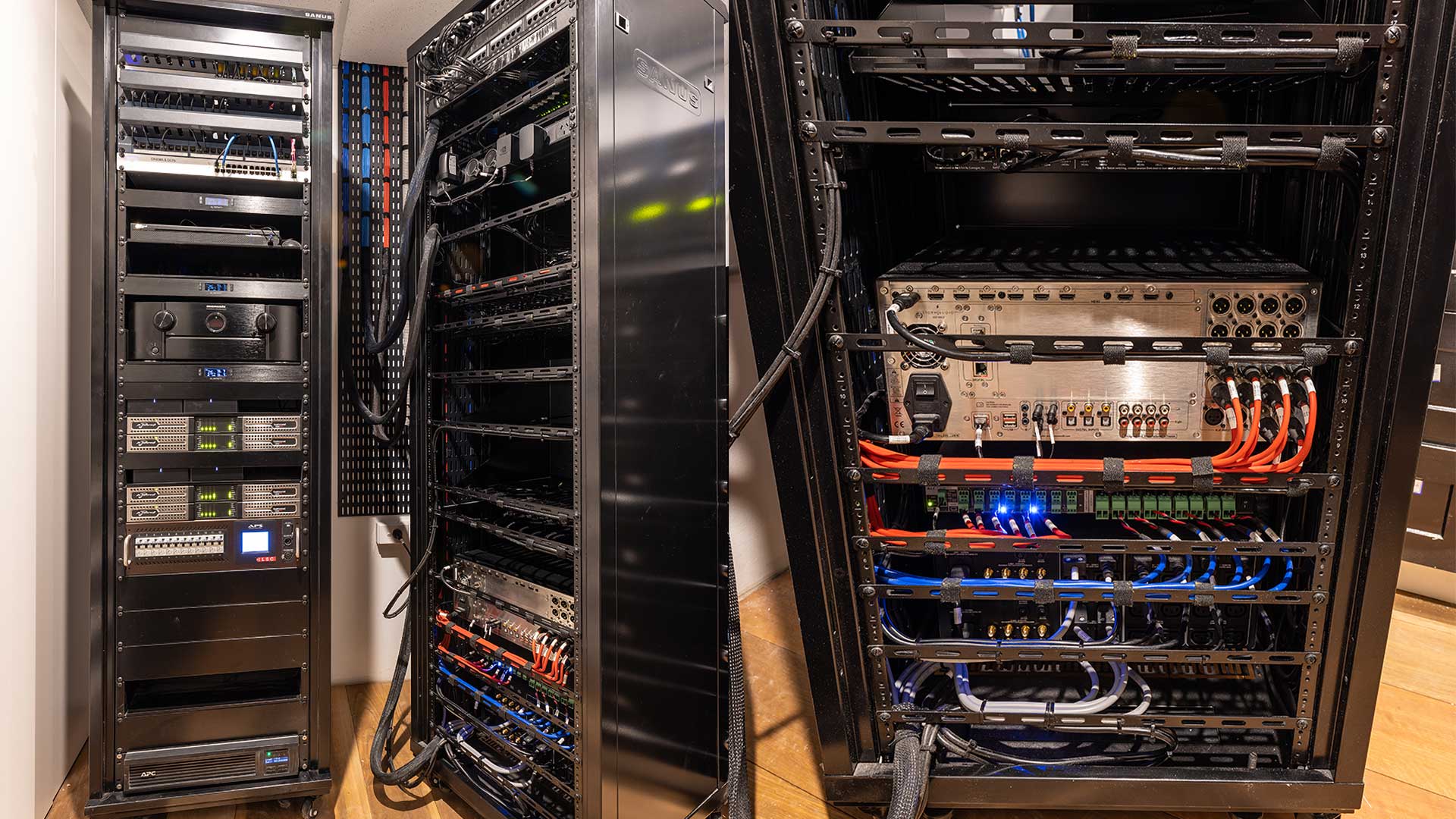
EQUIPMENT LIST & CREDITS
Panasonic DP-UB820 UHD Blu-ray player
AppleTV 4K
Christie M 4K25 RGB pure laser projector
Lumagen Radiance Pro 5348 4K Video Processor
Severtson Screens 165-inch Cinemascope screen Screen Research masking screen
Storm Audio ISP Mk2 32-channel processor
Elementi Sirocco bi-amp screen speakers x 3
Elementi Zephyr - bi-amp surround speakers x 6
Elementi Tungsten-2 amplifiers x 9
Elementi Onyx 15-inch subwoofers w. enclosure x 4
Elementi Titanium-2 amplifiers x 2 (subwoofers)
Pro Audio Technology SCRS-6c-ica in-ceiling loudspeakers x 6
Pro Audio Technology DMA-1508 power amplifier (Atmos channels)
Fortress Crossington seating
D-BOX seating actuation throughout
Araknis data and switching
Sanus AV rack
Furman Elite 16 linear power conditioners x 2
Calibration of Projector and Lumagen
Images: Scott Sauer
Design & installation: Wavetrain Cinemas
MORE:
See all our Sound+Image custom showcases of Australian home cinemas
And our Australian reviews from Sound+Image & Australian Hi-Fi magazines
The best surround sound systems 2023 you can buy: speakers and soundbars for immersive home cinema audio
Sound+Image is Australia's no.1 mag for audio & AV – sister magazine to Australian Hi-Fi and to the UK's What Hi-Fi?, and bestower of the annual Sound+Image Awards, which since 1989 have recognised the year's best hi-fi and home cinema products and installations. While Sound+Image lives here online as part of our group, our true nature is best revealed in the print magazines and digital issues, which curate unique collections of content each issue under the Editorship of Jez Ford, in a celebration of the joys that real hi-fi and high-quality AV can bring. Enjoy essential reviews of the most exciting new gear, features on Australia's best home cinemas, advice on how to find your sound, and our full Buying Guide based on all our current and past award-winners, all wrapped up with the latest news and editorial ponderings. Click here for more information about Sound+Image, including links to buy individual digital editions and details on how best to subscribe.
